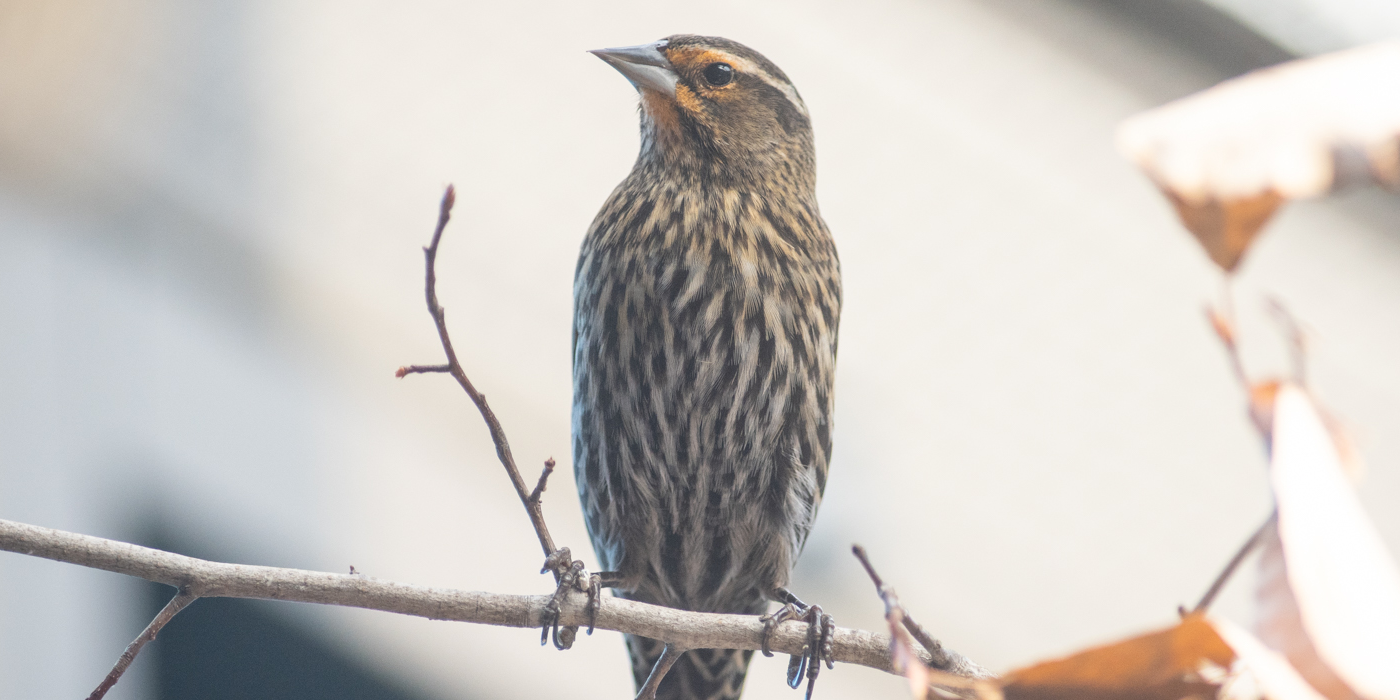Physical Description
Red-winged blackbirds are named after the red patches on the males’ shoulders, which are visible when resting and flash while flying. These shoulder patches are also called epaulets. A female resembles a large sparrow, with various shades of brown streaked with creamy white throughout the body.
Depending on the region, a red-winged blackbird shows subtle variations in plumage. The most easily identifiable variation lives in coastal California, in which the males don’t have a yellow border on their red epaulet. This subspecies is sometimes called the “bicolored blackbird.”
Size
A stockier blackbird, red-winged blackbirds measure between 7 and 9 inches (17.78 and 22.86 centimeters). Their wingspan averages over a foot long (12- 16 inches, or 31-40 centimeters) and they weigh between 1.1 and 2.7 ounces (32 to 77 grams).
Native Habitat
Red-winged blackbirds are found in marshes year-round. They also live in meadows, prairies and fields near ponds. Some populations are year-round residents in the U.S., some are short-distance migrants within North America. Only northern populations will migrate as far south as Mexico for the winter. Male red-winged blackbirds return first to northern territories in early spring, with females following later.
Lifespan
Communication
Males defend their territory by perching high and singing a nasally “conk-la-ree” song.
Food/Eating Habits
They mainly eat seeds and grains, including farm crops such as corn and rice. During the breeding season these birds will also eat many insects and spiders. They have also been known to eat small fruits like blackberries, small animals and carrion when available. During the winter they are commonly seen at bird feeders.
Social Structure
Male red-winged blackbirds are very territorial and have been known to chase intruders, even much larger animals such as great blue herons, raptors and humans.
During breeding season, males will mate with several females. One male can attract up to 15 females to nest in his territory. Despite their territorial nature, red-wing blackbird territories sometimes overlap. Several females live within a male’s territory but sometimes will mate with males from other territories.
Migrating populations of blackbirds will join other blackbirds, grackles, cowbirds and starlings to migrate and winter in enormous flocks. Red-winged blackbirds’ scientific name, Agelaius phoeniceus, loosely translates to “scarlet flock member” in Greek and is derived from these social habits.
Reproduction and Development
Red-winged blackbirds build their nests low among vertical shoots of marsh vegetation, shrubs, or trees. Female red-winged blackbirds lay two to three clutches of three or four eggs per nesting season.
Females incubate their eggs for 10 to 12 days. When the eggs hatch, males help the females feed the chicks, but females remain the primary caregivers. Red-winged blackbird chicks fledge when they are 11 to 14 days old.
Help this Species
Be a smart consumer. Choose products made with sustainable ingredients, such as Smithsonian certified Bird Friendly coffees, which support farmers striving to limit their impact on wildlife and habitat.
Be a responsible cat owner, and keep cats indoors or under restraint when outside. Never release animals that have been kept as pets into the wild.
Avoid single-use plastics, such as plastic bottles, bags and utensils. Choosing reusable options instead can help reduce plastic pollution.
Plant native flowers in your garden to help feed resident and migrating pollinators. You'll make your lawn beautiful and help wildlife at the same time!
Meet the Animals
While currently considered a species of least concern, red-winged blackbird numbers are decreasing. Farmers often see these birds as pests since they can cause significant crop damage. Large roosts in agricultural areas are often targeted during the non-breeding season with poison, traps and shootings. Habitat loss is another threat to these birds.
Smithsonian's National Zoo and Conservation Biology Institute. (n.d.). Red-winged blackbird. Retrieved December 1, 2025, from https://nationalzoo.si.edu/animals/red-winged-blackbird
Animal News

Giant Panda Qing Bao Gets a Checkup ›

7 Spooktacular Animal Facts for Halloween ›

